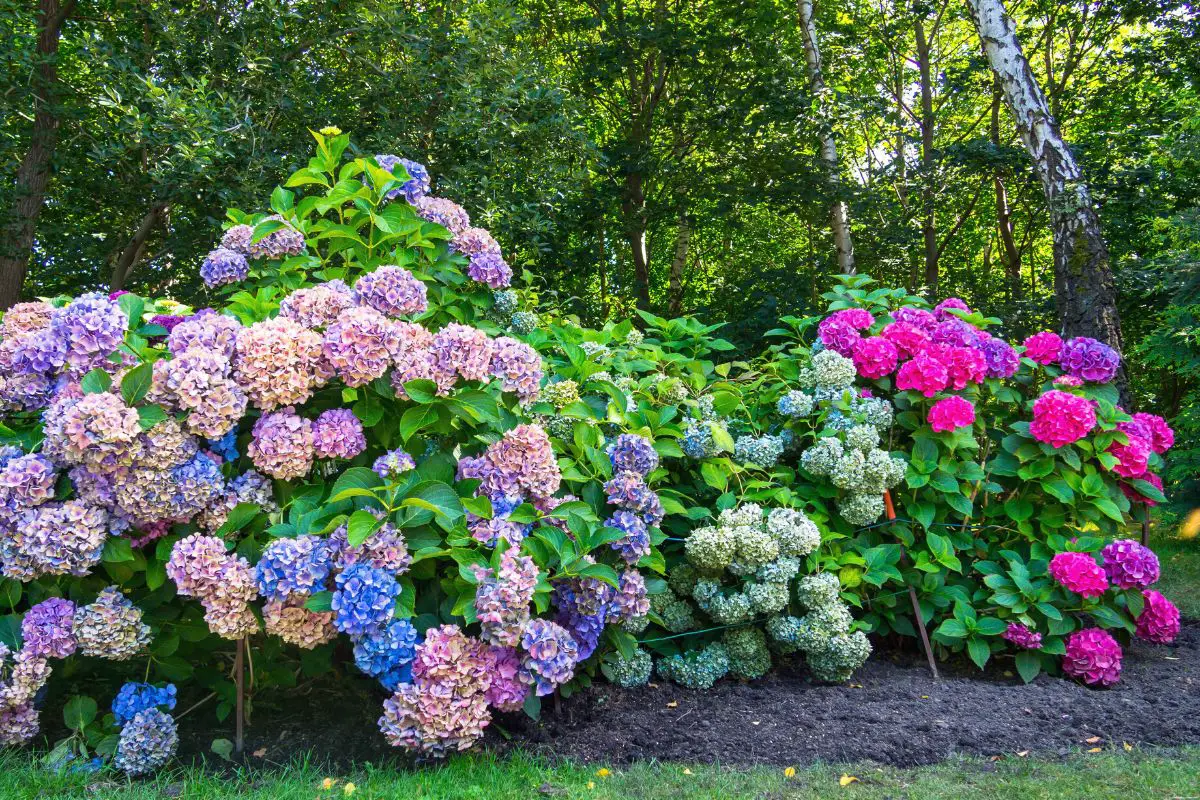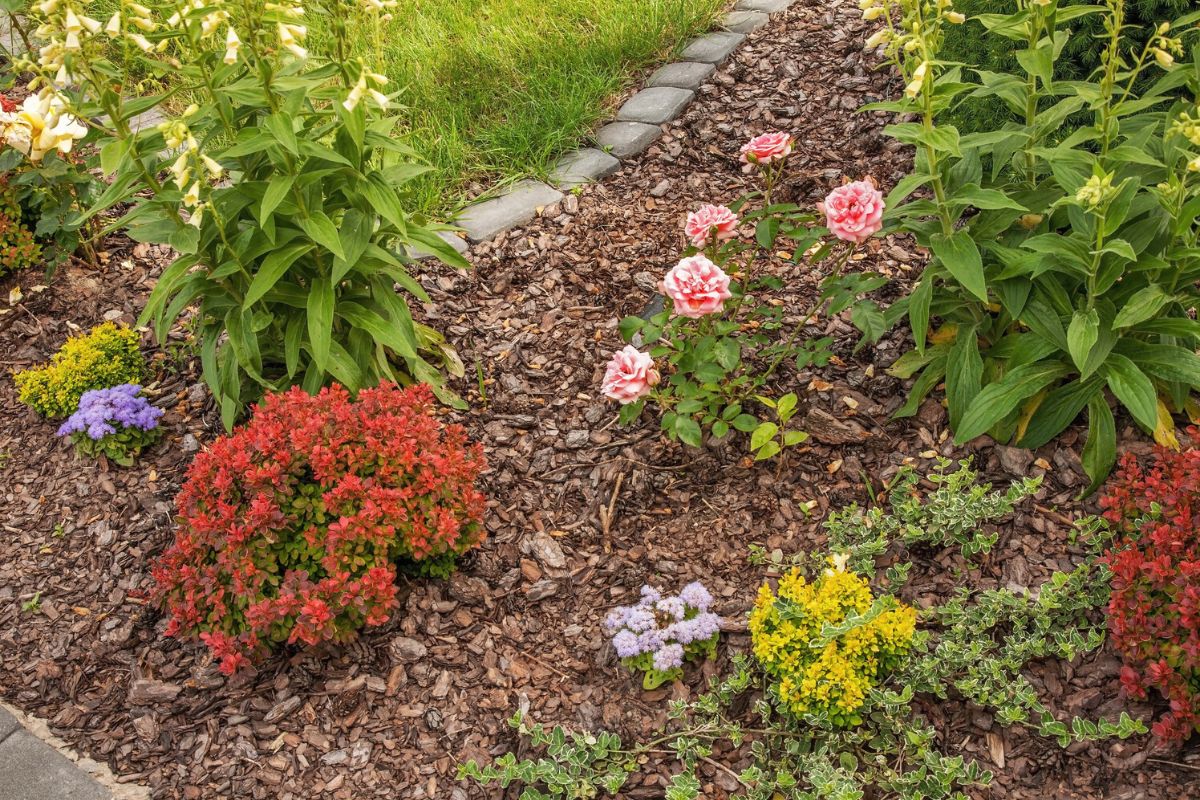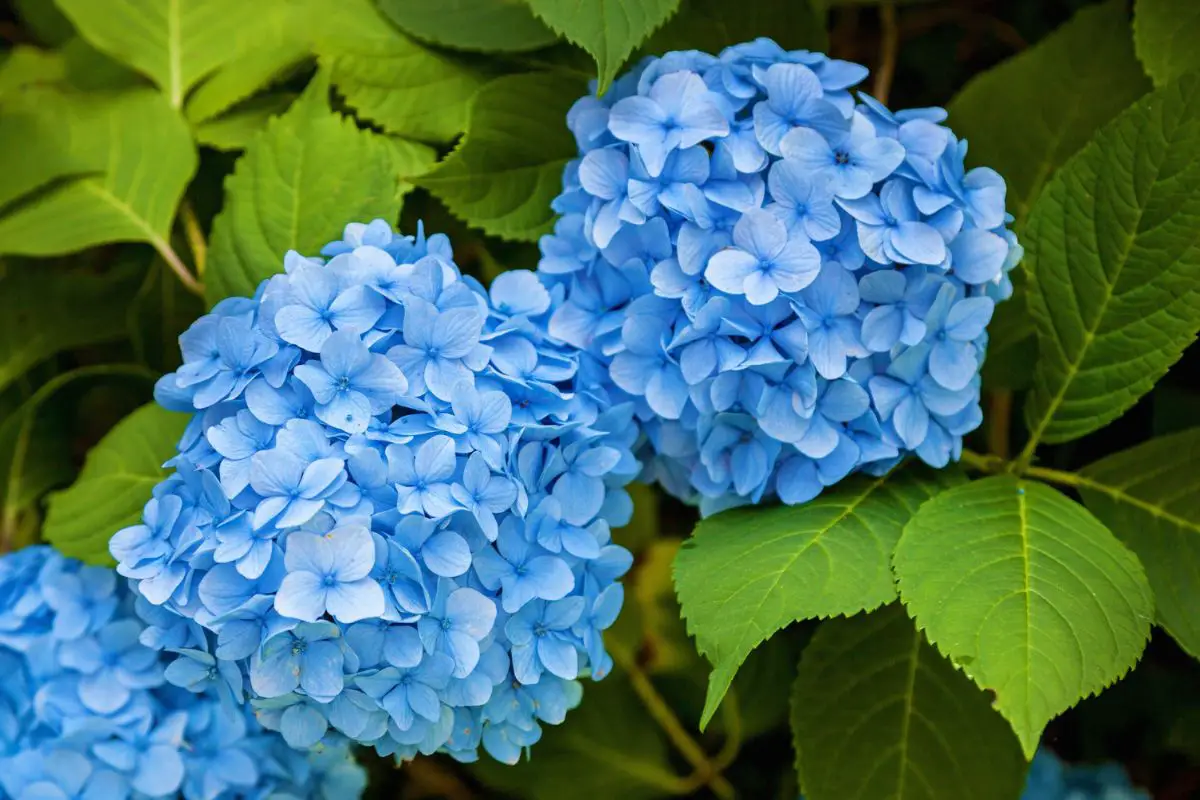You’ve probably seen a hydrangea if you live in the Americas, Indonesia, Japan, the Himalayan mountains, or Asia. Hydrangeas are so popular worldwide that there are over 600 varieties and at least 75 known species today. They’re typically planted for their beautiful flowers—which can bring an aesthetic feel to any space, but it’s common for these blooms to turn brown.
You should cut off brown hydrangea blooms. The brown blooms are no cause for panic, but they’re a sign you need to cut off the affected flowers so the hydrangea doesn’t look unpleasant. The cutting process—called deadheading—poses no harm to your hydrangea and can be beneficial to your plants.
I know deadheading sounds dangerous, and the term makes it seem like a tricky process, but anyone can do it. Of course, it helps to know crucial things about the plant you’re working with and the deadheading process. Keep reading to learn more about deadheading and why your hydrangea blooms turn brown in the first place.
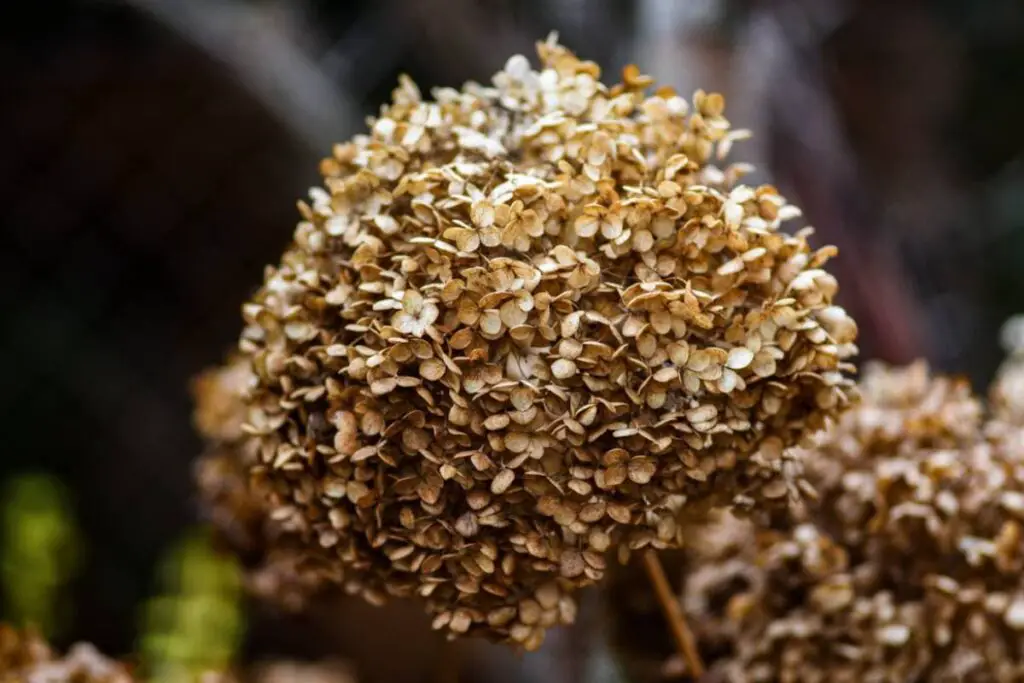
Why Are Your Hydrangea Blooms Turning Brown?
Hydrangeas have prominent flowers that come in different shapes and colors, including:
- Purple
- Red
- Pink
- White
- Blue
If you’ve seen a hydrangea or have experience caring for one, you should be familiar with how their blooms can sometimes turn brown. The brown blooms have an unpleasant look and can be shocking to amateur hydrangea gardeners, but they’re no cause for concern.
Your hydrangea blooms are likely turning brown due to the following:
Exposure to Intense Sunlight
Hydrangeas like the gentle morning sun but can quickly become dehydrated when frequently exposed to scorching midday sun, especially during summer. As a result, the blooms can fade sooner and turn brown.
Watering Too Much or Too Little
Hydrangeas need plenty of water as they develop flowers. They have shallow roots that require more frequent watering during the blooming season. You can apply 2 inches (5 cm) of mulch around the plant to help retain moisture.
Fertilizer Burn
Hydrangeas need up to three light fertilizer applications during the growing until the blooming season. You must dilute a 10-10-10 NPK fertilizer to half-strength every time you feed your plant. Too much fertilizer can burn the roots and affect the quality of the blooms.
Plant Age
Age can also cause browning in hydrangea plants, but it’s unlikely that that’s the reason your hydrangea blooms are turning brown. The effects of age on plants can be extreme, but they tend to manifest slowly and not as dramatically.
The exact reasons for browning vary among hydrangea species, but all the plants are vulnerable to extreme sunlight and inconsistencies in watering.
Keep Your Plants Healthy
While it’s normal for your hydrangea blooms to eventually turn brown, you can care for the plants by deadheading (cutting off the brown blooms).
You can also slow down browning in hydrangea blooms by growing them in partial or controlled sunlight, observing an adequate watering schedule, or mulching your soil.
You may need to do these things to ensure you care for your hydrangea plants well. Of course, you can only check how effective your preventive and corrective processes are by observing your plants. If the rate of browning slows down, you’re doing the right things!
However, the best way to ensure your hydrangea is in top shape is to measure the environmental conditions of its space with a moisture meter, a pH meter, and an NPK test kit. That means you’ll need to test the soil and ensure you only expose your hydrangea species to the required sunlight for growth.
This facilitates deciding how much moisture it needs and what kind of fertilizer to use.
How to Deadhead Hydrangeas
Hydrangeas look almost the same to the untrained eye, but you’ve likely seen at least eight different species in the last month. Despite their pretty blooms and terrific colors, you need to cut off brown blooms when they appear to ensure the plant thrives.
Hydrangea blooms are typically large, so deadheading a plant with brown blooms can help the hydrangea grow more efficiently. It enables the hydrangea plant to use its energy for more useful biological processes and to develop other essential parts.
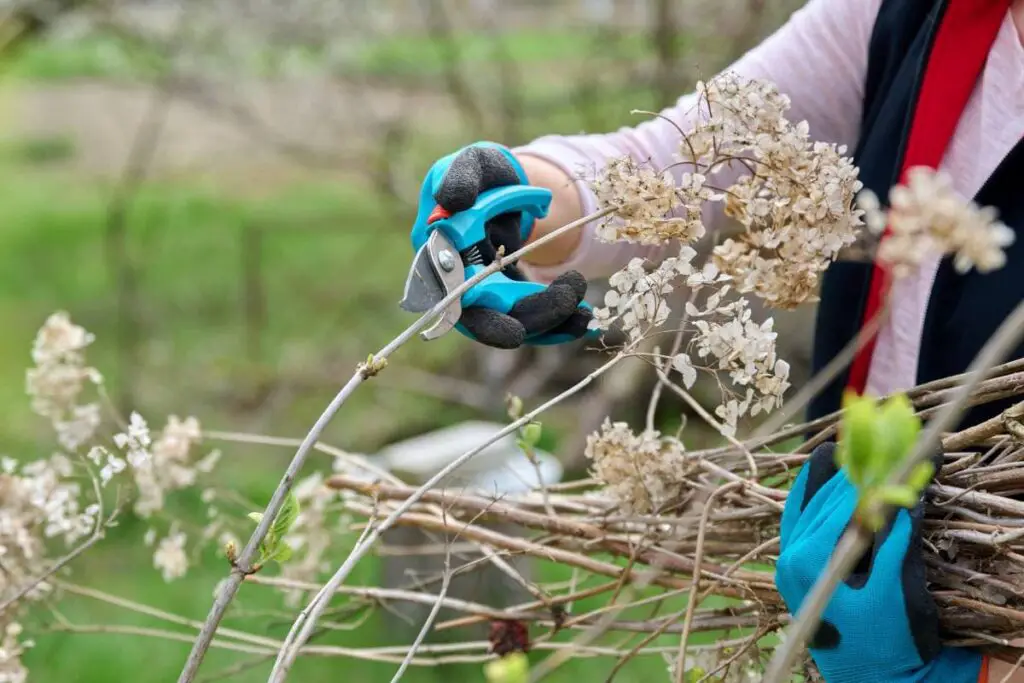
Besides hydrangeas, other plants that need deadheading to look pretty include:
- Lavenders
- Petunias
- Dahlias
- Rhododendrons
- Zinnias
Here’s how to deadhead hydrangeas (and most of these other plants, as well):
Gather Your Supplies
First, you’ll need to gather all the tools you’ll need to cut off the brown blooms. You’ll need a pair of pruning shears, garden gloves, and a suitable container for holding detached blooms.
Deadheading any plant is pretty simple, but I recommend you don’t deadhead your hydrangea without the appropriate tools. While it’s possible you can cut the brown blooms with scissors or without gloves—you can seriously hurt the plants or yourself in the process.
Disinfect the Shears
Clean the pruning shears with a piece of cloth that’s been soaked in some alcohol. The cleaning is to disinfect the shears and ensure you do not harm the hydrangeas while deadheading. Ensure you have the cloth around you throughout the process.
Cut Spent Blooms
Locate the brown blooms and cut below the spent blooms and just above the healthy leaves. This part is critical, and you need to cut the blooms one stem at a time. Remember to clean your pruning shears as often as possible during the process.
When Should You Cut off Brown Blooms From Your Hydrangeas?
You might wonder if deadheading is the same as pruning or if they at least have some relationship between them.
Both terms refer to beneficial cutting in gardening and general horticulture—but while pruning refers to removing any part of a plant, deadheading is a type of pruning that refers explicitly to cutting off blooms.
Should you worry about optimal deadheading times since they share many similarities?
You should cut off brown blooms from your hydrangeas as soon as they appear. Since the blooms typically emerge during the blooming season, you’ll need to deadhead more often then to ensure your hydrangeas look as attractive and healthy as possible.
Ultimately, the best period to deadhead your hydrangeas depends on the plant’s species, the soil type, and other external factors. Of course, it also depends on the gardener. Some gardeners prefer to let all their hydrangea blooms brown before cutting them, and others prefer to deadhead as soon as they notice brown blooms.
Deadheading your hydrangeas during blooming periods also encourages the plant to grow more extensive shoots and healthier flowers. Hydrangeas typically bloom during spring, summer, and early fall, but extreme summer temperatures may delay blooming in some species.
Although it’s fine to cut off brown blooms during these periods, you might want to show some restraint when it’s close to winter and during late fall weeks. These times are not especially favorable for new growth, and your hydrangeas may suffer in the process.
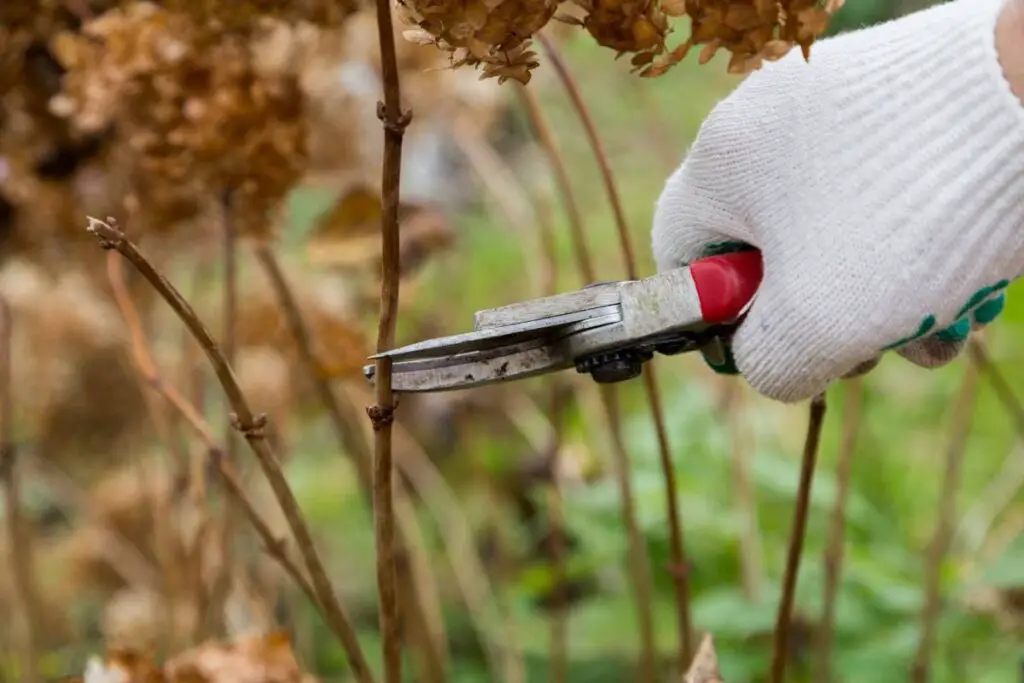
Will Your Hydrangeas Rebloom After You Deadhead Them?
Like I said before, deadheading your hydrangeas will not harm them as long as you cut the brown blooms carefully. Deadheading carefully will ensure the prized blooms do not get damaged and the shoots do not get exposed to diseases.
While there are many theories about how cutting off certain parts of plants will cause the region to grow better, you may be tempted to associate deadheading and pruning with reblooming.
Hydrangeas will not rebloom after you deadhead them. You might see new flowers after cutting the brown blooms, but they are usually fresh shoots growing from your hydrangea plant. Deadheading your hydrangeas will also not encourage the growth of new flowers.
Most hydrangea species bloom once a year, and you may need to wait till the next blooming season for the plant to bloom again. Of course, you want to care for the plants during the winter season to ensure they survive till that time.
Some hydrangea varieties have been reported to rebloom under the right conditions. These varieties do not bloom in all weather and may require coaxing to ensure they produce new flowers after the first flush. However, these reblooming hydrangea varieties are more vulnerable to extreme and changing temperatures.
What Happens if You Don’t Cut off Brown Hydrangea Blooms?
It’s common for many gardeners to be somewhat hesitant about deadheading their plants. After all, cutting off plant parts might be simple—but it does come with some risks that can be fatal to many plants if it’s not done correctly. Therefore, it’s normal to wonder if anything awful can happen if you don’t cut off your brown hydrangea blooms.
Your hydrangea will be safe if you don’t cut off the brown blooms. The blooms are typical of aged hydrangeas, so you can leave them if they show up. However, many gardeners cut the brown blooms on the hydrangeas for aesthetic reasons.
In addition, cutting off spent or damaged blooms will encourage your plant to focus its energy on healthier blooms.
Whether you cut the brown blooms or decide to keep them, ensure you tend to your hydrangeas so that they flourish. And the tending process starts when you first plant the hydrangeas. You’ll need to plant them at optimal times in fall or early spring to ensure their success.
You’ll also need to plant them in the appropriate soil and practice good post-planting care. Don’t forget to examine your hydrangeas as often as you can. Although doing all of these things may not stop brown blooms from appearing, it can ensure you end up with big, beautiful blooms and delay the onset of browning.
Final Thoughts
Brown hydrangea blooms are normal and are usually a result of age, excessive sunlight, watering problems, or fertilizer burns. You can cut off the brown blooms, but the decision is purely for aesthetic reasons as the blooms don’t harm the plant.
Cutting off these brown blooms is called deadheading, and it’s pretty simple to perform. You need a few tools to do it, but you’ll be fine as long as you follow the steps in this article.

